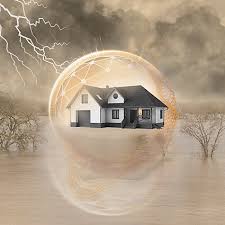
Climate Change Is Raising Insurance Rates – Here’s How to Lower Yours
Climate change is no longer just a distant threat — it’s impacting our daily lives in real, measurable ways. One surprising but significant effect is the steady rise in insurance premiums across the globe. From homeowners to drivers, many are feeling the pinch as insurance companies adjust rates to cover increasing risks caused by extreme weather and environmental changes.
But don’t despair — there are smart strategies you can use to lower your insurance costs while protecting your assets. Here’s how climate change affects your insurance and practical tips to keep your rates manageable.
How Climate Change Is Driving Insurance Costs Up
The science is clear: climate change is increasing the frequency and severity of natural disasters, including floods, wildfires, hurricanes, and droughts. These events result in more insurance claims and greater payouts by insurance companies.
Key impacts include:
-
Rising Home Insurance Premiums: Flood and fire-prone areas see sharp increases in home insurance costs.
-
Auto Insurance Costs: Severe storms cause more car damage, raising claims and rates.
-
Business Insurance: Companies in vulnerable locations face higher premiums and coverage restrictions.
Insurance companies must balance risk and profitability — so when disasters become more common, rates rise to cover potential losses.
Why Your Insurance Rates May Be Higher Than Before
Even if you haven’t experienced a disaster yourself, your insurance rates can increase because:
-
Your property is in a high-risk zone (e.g., floodplain, wildfire area).
-
Local or national insurers adjust premiums for broader risk trends.
-
Increased claims in your region affect overall pricing.
-
Changes in government policies or regulations impact insurance markets.
How to Lower Your Insurance Rates in a Changing Climate
The good news? You’re not powerless. Here are proven strategies to help lower your insurance premiums and protect your property:
1. Improve Your Home’s Resilience
-
Install storm shutters or impact-resistant windows.
-
Upgrade roofing to materials rated for extreme weather.
-
Clear brush and create defensible space to reduce wildfire risk.
-
Elevate your home or utilities if in flood-prone areas.
Many insurers offer discounts for these “risk mitigation” measures.
2. Shop Around and Compare
Insurance premiums can vary widely between companies. Don’t hesitate to:
-
Get multiple quotes annually.
-
Work with an independent broker who can find the best deals.
-
Consider regional insurers that understand local climate risks better.
3. Bundle Your Policies
Many insurers offer discounts if you combine home, auto, and other insurance with the same company. Bundling can reduce overall costs and simplify management.
4. Increase Your Deductible
Choosing a higher deductible can lower your monthly premium. Just ensure you can afford the deductible amount if you need to file a claim.
5. Maintain a Strong Credit Score
Believe it or not, in many places, insurers use credit scores to determine premiums. Maintaining good credit can help keep your rates lower.
6. Install Security and Monitoring Systems
Home security alarms, fire detectors, and flood sensors can reduce your risk and may qualify you for premium discounts.
7. Stay Informed About Local Risk Changes
Keep an eye on local government flood maps, wildfire zones, and other risk assessments. If your property’s risk classification changes, talk to your insurer about coverage options.
When to Consider Alternative Coverage Options
If you live in an extremely high-risk area, traditional insurance might become prohibitively expensive or unavailable. In such cases:
-
Look Into Government Programs: Some regions offer subsidized flood insurance or disaster assistance programs.
-
Explore Specialized Insurers: Some companies specialize in high-risk property coverage.
-
Invest in Risk Reduction: Further invest in property upgrades to qualify for better rates.
Final Thoughts
Climate change is reshaping how insurance companies assess risk—and what you pay for coverage. But by proactively improving your property’s resilience, shopping wisely, and making informed choices, you can take control of your insurance costs. The key is to act now, before rates climb even higher.
Protect your home, your car, and your peace of mind—without breaking the bank.